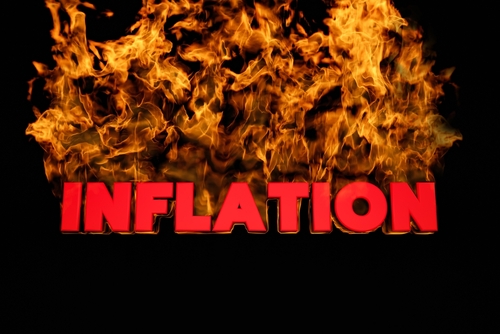
Monetary Policy & Inflation | US

Monetary Policy & Inflation | US
This article is only available to Macro Hive subscribers. Sign-up to receive world-class macro analysis with a daily curated newsletter, podcast, original content from award-winning researchers, cross market strategy, equity insights, trade ideas, crypto flow frameworks, academic paper summaries, explanation and analysis of market-moving events, community investor chat room, and more.
US inflation is still here, and still too hot for the Fed’s liking. Coming in yesterday at 6.6% YoY, core inflation broke a 40-year high and sent markets spiralling. The S&P 500 dipped below 3,500 initially before a remarkable reversal saw it end the day up 2.6%.
Yet although markets may be spinning, the data only clarifies the path for the Fed at the upcoming meeting on 2 November. I expect 75bp there, and another equally sized hike in December. First, though, let’s dig into the details.
September CPI was higher than expected at 0.4% for headline and 0.6% for core MoM, against 0.2% and 0.4% expected and 0.1% and 0.6% in August. Also, median price inflation MoM remained high at 67bp against 74bp in August.
On a six-month annualized basis, which is less noisy than MoM or 3m while still capturing short-term changes, core inflation accelerated further (Chart 1).

I did not expect this surprise – the monthly data is volatile. But I expected CPI prints to continue to align with my overall macro view: the stabilization of core goods inflation (on persistent supply bottlenecks) and accelerating services inflation (from the tight labour market). This is largely what happened in September – and August.
The most important drivers of September core goods inflation were new cars and light trucks, which increased by 70bp MoM. Used car and truck prices fell by 1.1% MoM. But since Americans spend five times more on new than used cars, it failed to lower core goods inflation (Chart 2).

The most important driver of September core services inflation was shelter again. Owners’ equivalent rent (OER) was behind this: it increased by 0.8% following a 0.7% increase in August. Shelter represents almost 60% of core services weights. In September, shelter contributed 46bp to core services inflation of 79bp MoM.
House price inflation finally turned negative MoM in July. But this will translate slowly to shelter cost inflation. Meanwhile, wages are likely to remain the dominant drivers of rents.
As of 13 October, the Atlanta Fed median wage estimate for September has not been published. However, with the NFP showing still a very tight labour market, I expect it will be near or above 6.7%.
The labour market remains tight until the Fed hikes enough to slow the economy. And as long as it does, wage growth and services inflation will likely keep trending higher (Chart 3).

Following the CPI print, markets are pricing a 75bp hike in November and almost 75bp in December.
I continue to expect 75bp at both meetings. The Fed’s current internal debate is between a 75bp and 50bp clip. The doves argue 75bp risks overtightening, while the hawks see a 50bp clip pushing the Fed further behind the curve. For November, the doves have already accepted 75bp, based on their agreement to react to actual rather than expected inflation.
Today’s data bolsters the hawks’ case, especially since too few data points are due between the November and December FOMC meetings (one NFP and two CPIs) to fundamentally change the macro picture. The economy moves far slower than markets, and the Fed is focused on the economy more than on markets.
Spring sale - Prime Membership only £3 for 3 months! Get trade ideas and macro insights now
Your subscription has been successfully canceled.
Discount Applied - Your subscription has now updated with Coupon and from next payment Discount will be applied.